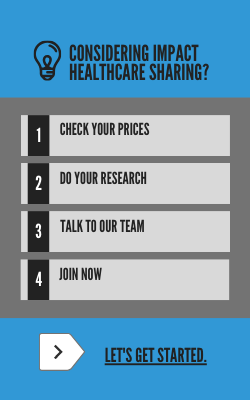-3%20(1).webp?width=795&height=530&name=Blog%20Images%20-%20Impact%20(6)-3%20(1).webp)
Chronic Obstructive Pulmonary Disease Awareness Month
What You Need to Know about COPD
Chronic obstructive pulmonary disease, commonly known as COPD, is an umbrella term for both emphysema and chronic bronchitis.
COPD affects more than 24 million Americans, yet many don't even know they are living with it.
Smoking is the primary cause of COPD, which is why quitting is essential for prevention and treatment.
People with chronic bronchitis have chronic obstructive pulmonary disease (COPD).
Is it possible to prevent COPD?
The best way to prevent COPD is to not smoke. If someone is already a smoker, it is very important to quit smoking. People who have COPD and quit smoking typically have a marked reduction in the progression of the disease.
If you or someone you know wants to quit smoking, check out these resources we think you will find helpful. These powerful tools and tips to quit smoking can help lower the risk of developing COPD.
What causes chronic bronchitis?
Chronic bronchitis is long-term inflammation of the bronchi. It is common among smokers. People with chronic bronchitis tend to get lung infections more easily. They also have episodes of acute bronchitis when symptoms are worse.
Bronchitis symptoms often happen with other lung diseases, such as:
- Asthma.
- Pulmonary emphysema.
- Scarring of the lungs (pulmonary fibrosis).
- Sinusitis.
- Tuberculosis.
- Upper respiratory infections.
Symptoms may include:
- Cough, often called smoker’s cough.
- Coughing up mucus (expectoration).
- Wheezing.
- Chest discomfort.
-1.webp?width=795&height=530&name=Blog%20Images%20-%20Impact%20(2)-1.webp)
How is COPD treated?
The best test for COPD is a lung function test called spirometry. This involves blowing into a small machine out as hard as possible, which will test lung capacity.
Medicines used to treat COPD include:
- Quick-relief drugs to help open the airways.
- Control drugs to reduce lung inflammation.
- Anti-inflammatory drugs to reduce swelling in the airways.
- Certain long-term antibiotics.
In severe cases or during flare-ups, you may need to receive:
- Steroids by mouth or intravenously.
- Bronchodilators through a nebulizer.
- Oxygen therapy.
- Assistance from a machine to help to breathe by using a mask or through the use of an endotracheal tube.
- Your provider may prescribe antibiotics during symptom flare-ups.
Living with COPD
There are things that you could do every day to keep COPD from getting worse, protect your lungs, and stay healthy.
Walk to build up strength:
- Ask the provider or therapist how far to walk.
- Slowly increase how far you walk.
- Avoid talking if you get short of breath when you walk.
Things you can do to make it easier for yourself around the home include:
- Avoid very cold air or very hot weather.
- Avoid being around anyone who smokes.
- Reduce air pollution by not using the fireplace and getting rid of other irritants.
- Manage stress and your mood.
- Use oxygen if prescribed for you.
- Eat healthy foods, including fish, poultry, and lean meat, as well as fruits and vegetables.
Always stay on top of your yearly wellness visits so you can get ahead of any issues that may be going on. Impact members can have these visits shared according to the details in the Member Guidelines.

COMMENTS

-3.jpg?width=300&name=Blog%20Images%20-%20Impact%20(6)-3.jpg)